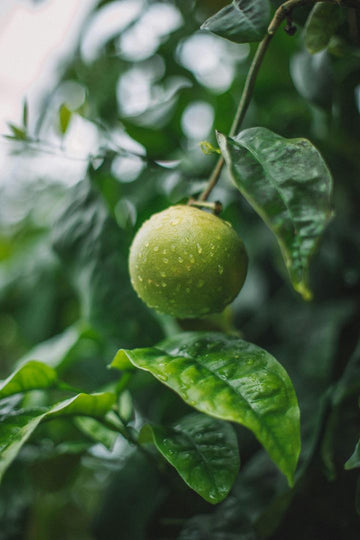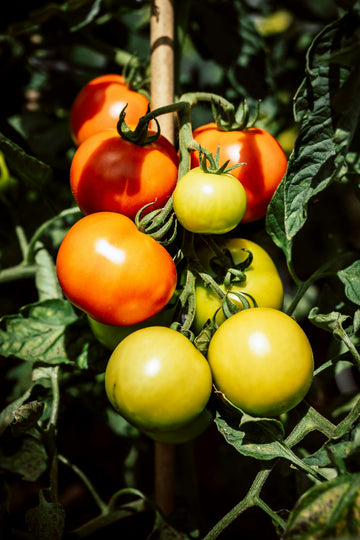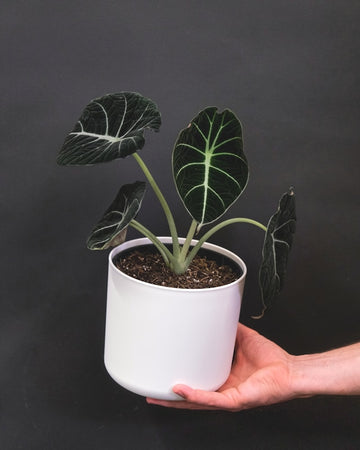Limes, with their zesty flavor and refreshing aroma, are a beloved addition to Indian cuisine and beverages. Imagine plucking fresh limes from your own tree, enhancing your dishes with the vibrant taste of homegrown citrus. If you're keen on cultivating limes in your home, whether you have a spacious garden or a modest balcony, this comprehensive guide will help you embark on your citrus-growing journey.
1. Choose the Right Variety:
Selecting the appropriate lime variety is crucial for successful cultivation in India's diverse climates. The "Tahiti" or "Persian" lime (Citrus latifolia) is a popular choice for its juicy fruit and adaptability to different growing conditions. Alternatively, you may opt for the smaller, more acidic "Key" lime (Citrus aurantiifolia) if you prefer a tangier flavor.

2. Climate and Location:
Limes thrive in warm, subtropical climates with plenty of sunlight and protection from strong winds. Choose a sunny spot for your lime tree, preferably with at least 6-8 hours of sunlight per day. If you're growing limes in a container, place it in a location that receives ample sunlight and can be easily moved indoors during cooler months or extreme weather conditions.

3. Soil Preparation:
Prepare well-draining soil with a slightly acidic to neutral pH (6.0-7.0) for optimal lime growth. Amend heavy clay soil with organic matter like compost or well-rotted manure to improve drainage and soil structure. Avoid waterlogged conditions, as limes are susceptible to root rot in poorly drained soil.

4. Planting:
Plant lime trees in the spring or early monsoon season to allow them to establish roots before the onset of winter. Dig a hole slightly larger than the root ball of your lime sapling and backfill with amended soil. Ensure the graft union (the bulging area where the scion meets the rootstock) is above the soil line when planting.

5. Watering and Mulching:
Water newly planted lime trees deeply to settle the soil and encourage root establishment. Once established, water regularly, especially during hot, dry periods, but avoid overwatering to prevent root rot. Apply a layer of organic mulch, such as shredded bark or compost, around the base of the tree to conserve moisture, suppress weeds, and regulate soil temperature.

6. Pruning and Training:
Prune lime trees to maintain a balanced shape, remove dead or diseased branches, and improve airflow within the canopy. Remove any suckers or shoots that emerge from below the graft union to prevent them from overtaking the tree. Train young trees by gently bending and securing branches to encourage an open, spreading growth habit.

7. Fertilization:
Lime trees benefit from regular fertilization to support healthy growth and fruit production. Apply a balanced fertilizer formulated for citrus trees every 4-6 weeks during the growing season (spring through summer). Alternatively, use organic fertilizers like compost or well-rotted manure to provide essential nutrients without the risk of chemical buildup.

8. Pest and Disease Management:
Keep an eye out for common citrus pests such as aphids, scale insects, and citrus leaf miners. Monitor your lime tree regularly and treat infestations promptly with insecticidal soap or neem oil spray. Prevent fungal diseases like citrus canker and powdery mildew by maintaining good airflow, avoiding overhead watering, and applying copper-based fungicides preventively.

9. Harvesting:
Harvest limes when they reach their mature size and color, typically green or yellow depending on the variety. They should feel firm yet slightly yielding to the touch and have a fragrant aroma. Use pruning shears or scissors to cut the fruit from the tree, leaving a small portion of the stem attached. Limes can be harvested throughout the year, with peak production usually occurring in late spring to early summer.

10. Enjoying the Fruits of Your Labor:
Once harvested, limes can be used in a myriad of culinary delights, from tangy curries and refreshing beverages to zesty desserts and marinades. Savor the unique flavor and aroma of your homegrown limes, knowing that you've nurtured them from sapling to harvest with care and dedication.

Conclusion:
Growing limes at home in India is a fulfilling endeavor that allows you to enjoy the bounty of fresh, flavorful citrus right at your fingertips. With proper care, attention to detail, and a little patience, you can cultivate healthy lime trees that yield an abundance of fruit for years to come. So roll up your sleeves, dig into the soil, and embark on your citrus-growing adventure today!





 At Palasa, we believe in the seamless fusion of nature, design and humanity.
At Palasa, we believe in the seamless fusion of nature, design and humanity.